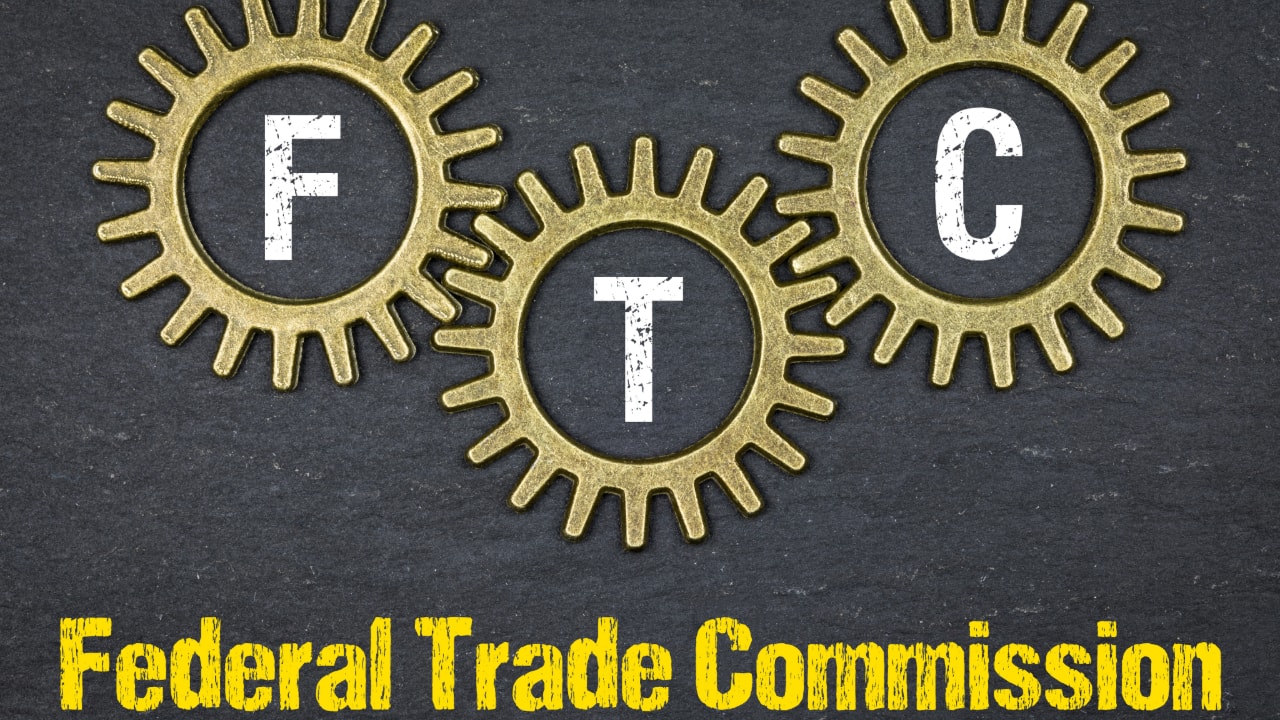FTC Safeguards Rule Checklist: Designate a "Qualified Individual"
Feb 27, 2025
Introduction
Welcome to the first installment of our multi-part blog series covering the FTC Safeguards Rule Checklist—your go-to guide for compliance. This series is a companion to our FTC Safeguards Rule Checklist for Compliance infographic, breaking down each key requirement in detail.
The FTC Safeguards Rule requires financial institutions to designate a Qualified Individual to implement and maintain an Information Security Program (ISP). This isn’t just a box to check—this individual plays a critical role in safeguarding sensitive financial information and ensuring compliance. Incident response plans are also essential tools for firms to navigate compliance with the Safeguards Rule, as they help maintain security and manage potential cyber threats effectively.
In this article, we’ll break down:
-
What the FTC Safeguards Rule is
-
Who must comply
-
The role of a “Qualified Individual”
-
How to choose the right person for the job
-
Best practices, including third-party options
-
How smaller organizations can meet this requirement
Additionally, maintaining customer information is a crucial aspect of the FTC Safeguards Rule, emphasizing the need for financial institutions to develop and implement information security plans detailing how customer data is handled, stored, and protected.
Let’s get into it.
What is the FTC Safeguards Rule?

The FTC (Federal Trade Commission) Safeguards Rule is a set of cybersecurity regulations designed to protect consumer financial data. Established under the Gramm-Leach-Bliley Act (GLBA), the rule requires financial institutions to develop, implement, and maintain a comprehensive Information Security Program (ISP).
Originally introduced in 2003, the rule underwent significant amendments, with new requirements taking effect on June 9, 2023. These updates emphasize risk-based security controls, regular testing, and oversight of service providers. Additionally, the rule highlights the importance of conducting risk assessments to identify and adapt to changing threats. It also mandates measures to detect unauthorized access to customer information.
The rule applies to a broad range of businesses beyond traditional banks and lenders. If your organization handles consumer financial data, there’s a strong chance you must comply.
For a deeper dive into the rule’s history and general objectives, check out our FTC Safeguards Rule Requirements Guide.
Who Are Covered "Financial Institutions" Under the FTC Safeguards Rule?
The FTC defines “financial institutions” broadly, covering more than just banks. Many businesses that don’t consider themselves financial institutions are still required to comply.
Common covered entities include:
-
Tax preparers and accountants
-
Mortgage brokers and lenders
-
Auto dealerships offering financing
-
Payday lenders
-
Credit counselors and debt collectors
-
Investment advisors (not covered by SEC regulations)
-
Personal property appraisers
If your business collects or maintains sensitive financial information about customers, you likely fall under the rule. It is crucial to monitor service providers to ensure they maintain adequate security measures, as part of compliance with the Safeguards Rule.
To learn more about whether your business is covered, review our full guide on FTC Safeguards Rule Requirements.
FTC Safeguards Rule Checklist – Key Requirements
The FTC Safeguards Rule Checklist provides a structured approach to compliance. Organizations must:
-
Designate a “Qualified Individual” to oversee information security (16 CFR § 314.4(a))
-
Develop the ISP using a risk-based approach and ensure it includes a written information security plan (16 CFR § 314.4(b))
-
Implement security controls to mitigate risks (16 CFR § 314.4(c))
-
Monitor, review, and test security measures regularly (16 CFR § 314.4(d))
-
Establish policies, procedures, and security training (16 CFR § 314.4(e))
-
Manage service providers to ensure compliance, emphasizing the importance of service provider arrangements (16 CFR § 314.4(f))
-
Continuously improve the ISP based on findings (16 CFR § 314.4(g))
-
Implement an incident response plan to address any security event (16 CFR § 314.4(h))
-
Meet breach notification requirements
-
Provide written security reports to the board (16 CFR § 314.4(i))
In this article we will focus on Step 1: Designating a “Qualified Individual.”
Designating a "Qualified Individual"

What Makes an Individual "Qualified"?
Think of the Qualified Individual as the team captain. They don’t necessarily have to play every position, but they need to understand the game, strategize effectively, and ensure the team follows the playbook.
To be considered qualified, an individual should possess:
-
Experience in cybersecurity, information systems, risk management, and compliance
-
Strong management and project coordination skills
-
Authority and resources to implement security measures
-
Documented qualifications and reasons for selection
A Qualified Individual is the person responsible for implementing and enforcing your organization's Information Security Program (ISP). They ensure that your business follows security best practices and remains compliant with FTC regulations. Their role extends beyond just administration—they serve as the primary decision-maker for security strategy, ensuring that all risk-based policies align with business objectives and compliance mandates.
Information Security Program Accountability vs. Responsibility
Understanding and properly addressing both accountability and responsibility is crucial for effective compliance with the FTC Safeguards Rule.
-
Accountability lies with senior management (CFO, CEO, or board). They’re the ones on the hook if something goes wrong, meaning they ultimately retain liability for the security program's effectiveness.
-
Responsibility can be delegated to the Qualified Individual who actually runs the security program, ensuring compliance and execution of security measures.
Senior management must recognize that while they can delegate the responsibility of implementing and managing an Information Security Program to a Qualified Individual, they ultimately retain full accountability. In other words, you can delegate tasks, but you can’t delegate blame.
This is why selecting a truly qualified individual is crucial—because while they execute the program, senior management remains legally and financially responsible for ensuring security and compliance. A poorly chosen individual could put the entire organization at risk.
Using a Third-Party "Qualified Individual"
Don’t have an in-house cybersecurity expert? No problem! The rule allows organizations to use a third-party service provider as their Qualified Individual.
However, senior management is still accountable. That means:
✅ Vet the third party’s credentials and security practices
✅ Ensure they maintain an FTC-compliant Information Security Program (ISP)
✅ Document their oversight and provide periodic performance reports
Best practice: Identify the third-party ISP policy name, its revision number, last update date, and who reviewed it internally.
FTC Safeguards Rule Checklist for Compliance

This article is part of our FTC Safeguards Rule Checklist for Compliance series. Be sure to check out the FTC Safeguards Rule for Compliance infographic for an overview of all compliance requirements.
Input Output WISP – FTC Safeguards Rule for Tax Preparers Made Easy
Implementing an effective Information Security Program can be overwhelming, especially for businesses that lack dedicated security teams. Identifying a Qualified Individual and ensuring they meet compliance requirements can be time-consuming and complex. Many organizations struggle with drafting policies, procedures, and compliance frameworks, taking time away from their core business operations.
The Input Output Written Information Security Program (WISP) eliminates these challenges by providing:
✅ Pre-written policies, procedures, and forms, removing the need for businesses to start from scratch.
✅ Easy-to-fill templates to quickly designate a Qualified Individual and define their responsibilities.
✅ Written Incident Response Plan to meet compliance requirements and ensure you're ready for any adverse event.
✅ Step-by-step compliance guidance, ensuring businesses meet FTC Safeguards Rule requirements without the guesswork.
With our WISP, businesses can streamline compliance, avoid regulatory pitfalls, and get back to running their practice without unnecessary stress. Get your WISP now and make compliance easy!
Conclusion
Choosing a Qualified Individual isn’t just about checking a compliance box—it’s about protecting your business from cyber threats.
Whether you designate an internal leader, use an external provider, or wear the hat yourself, ensure:
🔹 The role is clearly defined
🔹 Senior management remains accountable
🔹 Everything is documented
Next up in our series: Developing a risk-based Information Security Program! Stay tuned. 🚀
STAY INFORMED
Subscribe now to receive the latest expert insights on cybersecurity, compliance, and business management delivered straight to your inbox.
We hate SPAM. We will never sell your information, for any reason.


